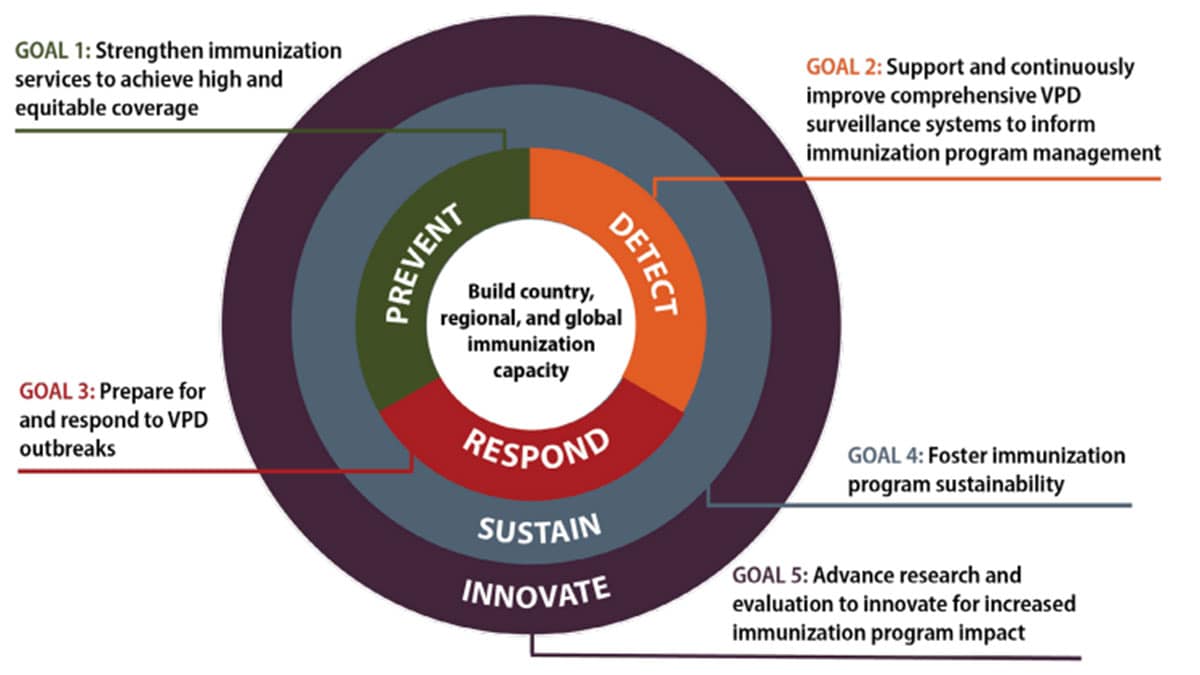At a glance
The CDC Global Immunization Strategic Framework 2021–2030 (CDC GISF 2021-2030) is a roadmap for global immunization. Its goal is a world where everyone, everywhere is protected from vaccine-preventable disease (VPDs). The GISF is a framework to provide scientific and programmatic leadership to end VPD threats.
Framework document
CDC Global Immunization Strategic Framework 2021-2030

Vision and goals
Vision
Progress toward that vision is structured around five goals, and implemented using four guiding principles, to achieve health impact objectives.
Three goals are core immunization program aspects that CDC seeks to strengthen:
- Prevent VPDs by strengthening immunization services
- Detect VPDs by supporting and improving disease surveillance systems
- Respond to and prepare for VPD outbreaks
Two goals are cross-cutting:
- Sustain immunization program strengths over time
- Innovate to increase immunization program impact

Principles and objectives
Guiding principles and health impact objectives
The guiding principles of the GISF 2021-2030 include:
- Data-guided policy and programmatic decision-making
- Integrated approach promoting linkages between disease-specific and other initiatives
- Partnership-based alliances applying the strengths of each organization
- Focused investment that uses strategic information to efficiently allocate resources for impact
The health impact objectives of the GISF 2021-2030 are to:
- Advance the development of new and improved vaccines for diseases that are high burden or have epidemic potential
- Control diseases to reduce morbidity and mortality to locally acceptable levels
- Eliminate transmission of diseases in defined geographic areas and eliminate diseases as a public health problem
- Eradicate diseases by stopping all transmission worldwide
| Advance Development | Control | Eliminate | Eradicate |
|---|---|---|---|
High Disease Burden
Epidemic or pandemic potential
|
With control targets
Without control targets–with vaccines recommended in all country immunization schedules
Without control targets–with vaccines considered based on disease burden
|
With targets for elimination of transmission
With targets for elimination of epidemics or as a public health problem
|
Polio |
Working with partners
A worldwide alliance for healthier people
The framework achieves this coordination by defining the agency’s role within a global network of public health and development organizations.
CDC strengthens immunization programs and improves their performance at every level, from local to global. The framework leverages CDC's longstanding epidemiological, laboratory, and programmatic expertise related to VPDs for maximum impact.
The overarching strategies of CDC and its key partners align with and support one another to advance global immunization progress. They also support the ownership of national immunization programs by country governments.
